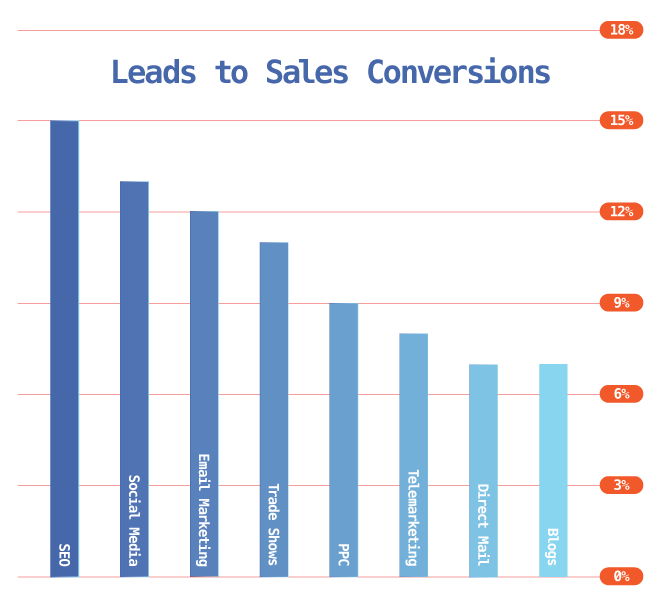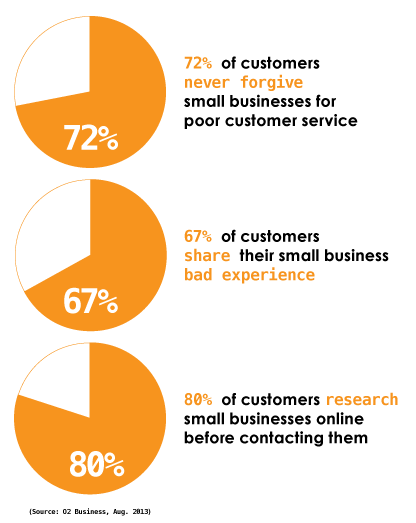Sales Leads, Branding, and Social Media
Originally published in July 2013
What is a sales lead? The answer depends on your perspective: a marketing qualified lead is NOT a sales ready lead, or even a sales qualified lead. Unfortunately, many CEOs and Sales Managers often see marketing as an organization (a cost center) designed to deliver orders for the sales team (a profit center), when in fact, they can only deliver leads, i.e. not-yet-buyers, who have been qualified or determined to have an affinity with the organization’s offerings, but who need to be sold to before they willingly exchange money for products or services.
That distinction is important because it must be understood at the forefront of business planning, in which expectations and processes are defined and, at least initially, require to be rigorously respected once the company or the product is launched. That is why it’s called a plan, to be given a chance to drive towards calculated results, with proper execution, before the company changes goals, in mid-flight, without gauging the consequences of the shift(s).
Source: HubSpot 2013 state of inbound marketing report
Social Media’s lead to sale conversion efficiency has jumped from 5th to second spot since the 2012 survey (from 4% to 13%), and could even claim some of SEO’s first position, since a lot of organic SEO is directly harvested from Social Media activities.
2015 Update: With nearly 4,000 respondents from over 150 countries, the Hubpost State of Inbound report revealed that businesses around the world predominantly prefer inbound to outbound marketing and sales activities by 3 to 1. Inbound marketing entails the creation of remarkable content for distribution and promotion across social channels, while outbound includes the use of banner ads, direct mail, cold calling, and other intrusive ways of grabbing the customer’s attention.
How does this relate to Social Media?
Social Media is not a sales tool… but it does help: in the graph above, HubSpot shows Social Media yielding twice as many lead-to-customer closes as direct mail marketing. Considering social media’s only cost is time, why not consider the effort? Social Media marketing is a component of the company’s branding strategy and should only opportunistically be used to sell. Social Media practice is a relatively new marketing channel whose role is to further build confidence, trust, and, ultimately, loyalty, between a company and its customers and prospects, in other words, Social Media enlivens the brand.
The standard sales funnel works as follows:
The Social Media enabled sales funnel adds additional drivers at both ends of the funnel to loop back into itself:
Social Media marketing closes the gap between your customers and your prospects: enabling strangers to become visitors, and extending the relationship with happy customers, by turning them into willing supporters, leveraging their delight into championing your cause.
Social Media at the Grocery Store
Let’s take the example of a grocery store. Anyone who walks into the store is a prospect (a qualified lead); the mere fact of walking into the building reasonably indicates the person is minutes away from becoming a customer in the market. How can you make sure the client becomes a customer of yours, one of the many suppliers present in the store? What is the prospect going to purchase? How can any individual product on the shelves make itself stand out as the right choice vs. the competitor’s sitting right next to it? This is where product category and individual company branding efforts come into play.
The Organic Label Example
The success of the organic food label is a good indicator of the difference between a generic product and a branded product. Our family consistently buys organic vegetables from the store. Executives have noticed that we are not alone, so they started to use an organic label throughout the store, on products that would otherwise not be considered for organic labeling. That brand is magical for the store because it commands higher margins. Many of these organic-branded products are manufactured and processed, but the label still successfully extends into their category, even for pop-tarts, which are clearly highly processed foods, and would not constitute a healthy choice. Yet the label does stick, and organic food consumers invariably gravitate towards those products precisely because they expand the reach of the brand into other product categories, thereby aligning the purchase to the organic mantra.
This particular type of branding is more of a coat-tail-ride than an actual individual brand, but it acts as a brand, in that the organic label category, at the height of its power, almost completely overshadows the company’s specific brand. This temporary branding differentiator is being exploited heavily and will keep doing so until the category fully mainstreams.
The built-in trust that comes with the organic label will eventually fade, fueled with inevitable industry abuses, horror stories of mislabeling, poor quality controls and, mostly, undeserved branding due to poor inspection or overreach of the organic certification criteria. Then each product will require its own marketing muscle to preserve or, most likely, reestablish consumer confidence to succeed on its own merits, its own individual brand, suffering from the lost luster of the damaged organic brand.
This is where social media has a very clearly defined marketing advantage; wherein the brand can instantly and consistently reinforce its deserved organic label, counter any negativity from its disingenuous competitors, and firm up its position of trust with its customers. This is where marketing and public relations come in together and salvage or even add to the brands’ shine, further adding to the brand’s equity.
Now let’s walk back into the store, after the scandal has decimated the label, and the confusion has also dissipated: the brand that successfully leveraged social media to defend its trust will clearly come out ahead and continue to benefit from the emotional attachment its reinforced trust has firmed up through the category’s turpitude. Selling instead of brand building would have resulted in the exact opposite market reaction, as social media observers would have seen the sales effort as an inventory liquidation play instead of a genuine effort of transparency.






